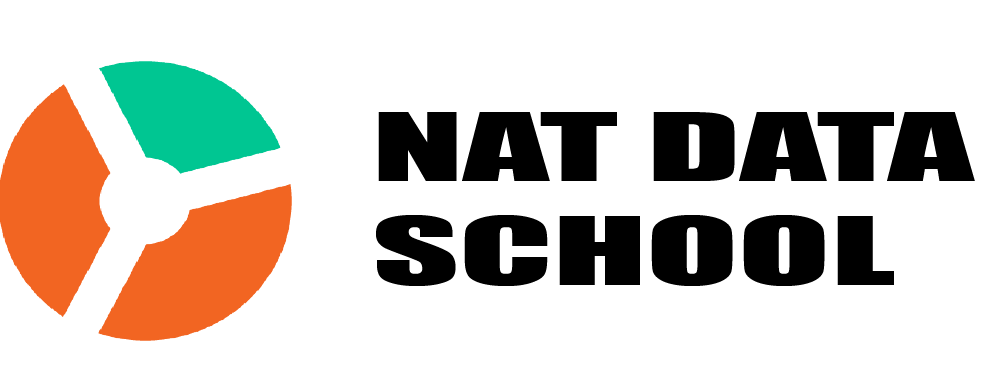- Description
- Curriculum
- Grade
Database and Tables Creation
· How to Create database
· How to Create Tables
DML Operations on Tables
· The Different ways of Inserting Data into tables
· How to Update the table values
· How to Delete the records from table
· How to Drop the table
· Difference between Truncate and Delete command
· How to Get the structure of the table
· How to take backup of the table
SQL Constraints
· What are SQL Constraints
· Primary Key
· Unique Key
· Not Null
· Default
· Check Constraint
· Foreign Key Constraint
· How to Create Composite Primary Key
· Candidate Key
Operators
· In, not in,=,>=,<=,<>,like, between, if exists ,And, Or,Like
· Usage of Wild character operators
· How to Use In, Not In and Between Operators
· What are Alias names and the usage of Alias Names
· How to Limit the Number of records
Group By
· Group By with Having clause
· When to Use Group by Having
· Difference between Having and where clause
· How to Use Case statement
Clauses
· What are Clauses in SQL
· What is the Order of execution of Clauses
Joins and Unions
· Different types of Joins with examples
· Inner join, Left join, Right join, Full outer join, Cross join, Self Join
· Explanation about Union and UNION All with examples
· When to use Union with real time scenario
Schema
· How to Create Schema
· How to Create a table for a particular schema
· How to Transfer table from one schema to other
Adding, Modifying and Drop a column on the existing table
· How to Alter a column by using SQL query
· How to Add, Drop a column by using SQL query
· How to add a Primary Key constraint on an Existing table
Table to table update
System Functions
· Scalar functions
· Aggregate functions
Date Functions
· 1.Dateadd
· 2.Datediff
· 3.DatePart
· 4.DateName
· Month Start Date
· Month End Date
String Functions
· Char
· Ascii
· Left, Right
· Len, data length
· Ltrim, Rtrim
· Replace, replicate, Reverse
· CharIndex, PatIndex
· Substring, Stuff(String,start,end,str2replace)
· str
· Coalesce
· Numeric Functions
· Abs, Log, Log10
· Power, round, SQRT,Floor,Ceiling
RANK Functions
· Row_Number
· Rank
· Dense Rank
· Ntile
Window Functions
· LAG, Lead, First_value, Last_Value, Running_total
Other Functions
· @@Version,@@Rowcount, db_id
· Cast function, Convert and Is NULL
Identity Column
· How to Impose Identity values in a table
· How to get the last inserted Identity seed value in a database
· @@Identity, Scope_Identity(), Ident_Current()
Sequence Generator:
· How to impose Identity values in a table Using Sequence
Views
· How to create, alter and drop Views
· Indexed views
Intersect and Except
· what is Intersect
· what is Except
Temp Tables
· Global Temp Tables
· local Temp Tables
· Table Variables
· Difference between Global, Temporary and Table Variable
· CTE’S
· Recursive CTE
Sub Queries
· Scalar and Multivalve Sub Queries
· Correlated sub queries
· Derived tables
Merge Statement with example
· Merge statement Syntax
· How to do Incremental Load using Merge in SQL
Cursors
· How to create Cursors
Pivot and unpivot
· How to use Pivot and Unpivot with example
Transactions
· Transaction Syntax
· What are Rollback transactions
· what are Nested Transactions with examples
· How to find number of Open transactions
· Different Types of Transaction available with examples
· Auto commit
· Explicit transaction
· Implicit transaction
Isolation Levels
· What are ACID Properties
· Different types of Isolation Levels with examples
· Read Uncommitted
· Read committed
· Repeatable Read
· Serializable
· Snapshot
Locks
· Locks granularity
· Shared Lock (s),Exclusive Lock (x), Update Lock (u)
· Different levels where we can apply Locks Granularity
· Row level, Table level
· Page level, Extent level,Key level
Dead Locks
· What is Dead Lock
· How to Identify Dead Lock through SQL Profiler
· How to resolve when Dead Lock occurs
Stored Procedures
· How to create stored procedures without parameters
· How to create stored procedures with parameters
· How to create stored procedures with default parameters
· How to create stored procedures with output or Return parameters
· Nested Procedure
User Defined Functions
· Scalar valued functions ,Inline table functions, Multi value functions with examples
· Difference between Stored Procedure and Functions
Triggers
· Instead of Triggers and After Triggers
· How Triggers used for Audit Purpose
· Magic tables
· Inserted and Deleted tables with examples
· DML and DDL triggers
Indexes
· Clustered Index and Non Clustered Index with examples
· Unique Indexes
· Column Stored Indexes
· Difference between Clustered and Non Clustered Index
· What are Table Scan and Index scan
· What is Index seek
· Difference between Table Scan and Index Seek
Normalization
· What are First Normal form, Second Normal form, Third Normal form ,BCNF OR Fourth normal form with examples
Dealing with XML Data
· Dealing with XML
· What are different types XML Data Formats
Taking Backup and Restore
· How to Take Back up and Restore of a database
· How to Attach and Detach a database
How to create dynamic SQL
· Creating dynamic sql
· How to execute dynamic sql
Error handling
· Using Try Catch block
Table Partitioning
· How to Partition a table which is having High volume of data
· How to create File groups, Partition Function and Partition Scheme
· How to map the Partition schemas to the Secondary files
Linked Servers
· How to create Linked server
· How to create Synonyms
Query Optimization\ Performance Tuning:
· Will explain 25 tips to improve sql query performance
Sql Profiler: How to trace the queries using sql profiler
Star schema model, Snowflake model
DATA BASE Modeling concepts
Logical, Conceptual , Physical data models
-
1Section 1: Development Tools1
What most schools don't teach
-
2Internet Reading What is SSIS?2This lesson is locked because you haven't completed the previous one yet. Finish the previous lesson to unlock this one.
-
3Internet Reading What is SSAS?Text lessonThis lesson is locked because you haven't completed the previous one yet. Finish the previous lesson to unlock this one.
-
4Lesson 1: Introduction to Databases and Tables CreationText lessonThis lesson is locked because you haven't completed the previous one yet. Finish the previous lesson to unlock this one.
Objective
By the end of this lesson, you will understand:
- What a database is.
- The purpose of tables in databases.
- How to create a database and tables using SQL.
-
5Practice ExerciseAssignmentThis lesson is locked because you haven't completed the previous one yet. Finish the previous lesson to unlock this one.
-
6Lesson 2: Data Manipulation Language (DML) Operations on TablesText lessonThis lesson is locked because you haven't completed the previous one yet. Finish the previous lesson to unlock this one.
Objective
By the end of this lesson, you will understand:
- What DML operations are.
- How to use
INSERT,UPDATE,DELETE, andSELECTstatements.
-
7Practice Exercise 2AssignmentThis lesson is locked because you haven't completed the previous one yet. Finish the previous lesson to unlock this one.
-
8Lesson 3: SQL ConstraintsText lessonThis lesson is locked because you haven't completed the previous one yet. Finish the previous lesson to unlock this one.
Constraints are rules enforced on a table's columns to maintain data integrity and ensure accuracy in the database. They define what data is valid and how relationships between tables are managed.
-
9Practice Exercise 3AssignmentThis lesson is locked because you haven't completed the previous one yet. Finish the previous lesson to unlock this one.
-
10Lesson 4: SQL Operators - Advanced ConceptsText lessonThis lesson is locked because you haven't completed the previous one yet. Finish the previous lesson to unlock this one.
In this lesson, we'll explore advanced SQL operators like
IN,NOT IN,=,>=,<=,<>,LIKE,BETWEEN,EXISTS, as well as the usage of wildcard characters, alias names, and how to limit the number of records in a query.- N/NOT IN: Check if a value matches one in a list.
- =, >=, <=, <>: Comparison operators for comparing values.
- LIKE: Pattern matching with wildcards (
%and_). - BETWEEN: Used for checking if a value is within a range.
- EXISTS: Checks if a subquery returns any rows.
- AND/OR: Logical operators for combining multiple conditions.
- Alias Names: Temporary names for columns or tables to simplify queries.
- Limiting Records: Use
TOPto limit the number of records returned.
-
11Practice Exercise 4AssignmentThis lesson is locked because you haven't completed the previous one yet. Finish the previous lesson to unlock this one.
-
12Lesson 5: Group ByText lessonThis lesson is locked because you haven't completed the previous one yet. Finish the previous lesson to unlock this one.
In SQL Server, the
GROUP BYclause is used to group rows that have the same values in specified columns into summary rows, and it's frequently used with aggregate functions such asCOUNT,SUM,AVG,MAX, andMINto calculate values on each group of data.- GROUP BY: Used to group rows based on columns, typically used with aggregate functions.
- Aggregate Functions: Operations such as
COUNT,SUM,AVG,MAX,MIN. - HAVING: Filters groups after they have been created by
GROUP BY. - Multiple Columns: You can group by more than one column.
- ORDER BY: Used with
GROUP BYto sort the result set after grouping. - DISTINCT: Can be used to return only unique values.
-
13Lesson 5: Practice ExercisesAssignmentThis lesson is locked because you haven't completed the previous one yet. Finish the previous lesson to unlock this one.
-
14Lesson 6: ClausesText lessonThis lesson is locked because you haven't completed the previous one yet. Finish the previous lesson to unlock this one.
In SQL, clauses are the fundamental building blocks of a query.
They are used to perform different operations such as filtering, sorting, or grouping data in a SQL statement. Each clause performs a specific function and is often combined with other clauses to form a complete SQL query.
Below are some of the most commonly used SQL clauses in SQL Server:
-
15Practice Exercise 6AssignmentThis lesson is locked because you haven't completed the previous one yet. Finish the previous lesson to unlock this one.
-
16Lesson 7: Joins and UnionsText lessonThis lesson is locked because you haven't completed the previous one yet. Finish the previous lesson to unlock this one.
In SQL, Joins and Unions are used to combine data from multiple tables. They allow you to retrieve related data that is distributed across different tables, making it possible to perform more complex queries. Let's explore both concepts in detail:
-
17Practice Exercise 7AssignmentThis lesson is locked because you haven't completed the previous one yet. Finish the previous lesson to unlock this one.
-
18Lesson 8: Schema in SQL ServerText lessonThis lesson is locked because you haven't completed the previous one yet. Finish the previous lesson to unlock this one.
In SQL Server, a Schema is a container for database objects like tables, views, stored procedures, functions, and more. Schemas help organize database objects into logical groups, making them easier to manage and access. Essentially, a schema is a way of grouping objects in a database under a specific namespace. Each schema belongs to a database user, but it provides a way to separate objects by business functions, roles, or security requirements.
-
19Practice Exercise 8AssignmentThis lesson is locked because you haven't completed the previous one yet. Finish the previous lesson to unlock this one.
-
20Lesson 9: Adding, Modifying, and Dropping Columns in SQL ServerText lessonThis lesson is locked because you haven't completed the previous one yet. Finish the previous lesson to unlock this one.
In SQL Server, you can alter an existing table structure using the
ALTER TABLEstatement. This includes operations such as adding new columns, modifying existing columns, and dropping columns that are no longer needed. -
21Practice Exercise 9AssignmentThis lesson is locked because you haven't completed the previous one yet. Finish the previous lesson to unlock this one.
-
22Lesson 10: System Functions in SQL ServerText lessonThis lesson is locked because you haven't completed the previous one yet. Finish the previous lesson to unlock this one.
SQL Server provides a wide array of system functions to help you manipulate data, retrieve information, and perform various calculations. These functions are often categorized into scalar functions and aggregate functions.
-
23Practice Exercise 10AssignmentThis lesson is locked because you haven't completed the previous one yet. Finish the previous lesson to unlock this one.
-
24Lesson 11: Date Functions in SQL ServerText lessonThis lesson is locked because you haven't completed the previous one yet. Finish the previous lesson to unlock this one.
SQL Server provides a variety of date functions that allow you to work with dates and times. These functions can be used to manipulate, extract, and calculate date values. Below are some commonly used date functions in SQL Server:
-
25Practice Exercise 11AssignmentThis lesson is locked because you haven't completed the previous one yet. Finish the previous lesson to unlock this one.
-
26Lesson 12: String Functions in SQL ServerText lessonThis lesson is locked because you haven't completed the previous one yet. Finish the previous lesson to unlock this one.
SQL Server provides various string functions to manipulate and work with string data. Below is a breakdown of commonly used string functions in SQL Server, including their syntax and examples.

Archive
Working hours
| Monday | 9:30 am - 6.00 pm |
| Tuesday | 9:30 am - 6.00 pm |
| Wednesday | 9:30 am - 6.00 pm |
| Thursday | 9:30 am - 6.00 pm |
| Friday | 9:30 am - 5.00 pm |
| Saturday | Closed |
| Sunday | Closed |



